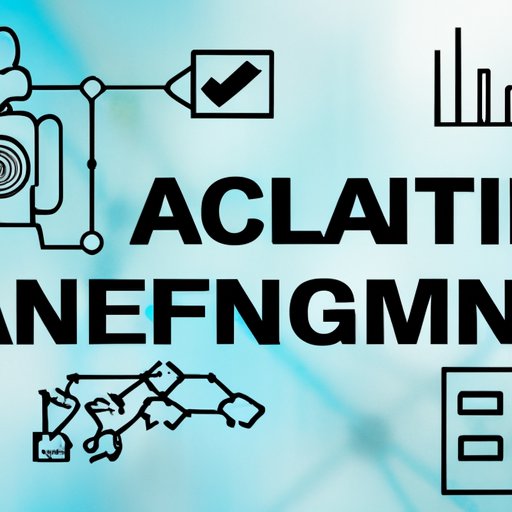Introduction
Artificial Intelligence (AI) is a rapidly developing area of technology that has the potential to revolutionize many aspects of our lives. From self-driving cars to personalized health care, AI promises to make our lives more efficient and enjoyable. But what does it take to create an AI system? In this article, we will explore the components, process and challenges involved in making an AI system.

Exploring the Components of an AI System
An AI system consists of three main components: algorithms, data and machines. Algorithms are sets of instructions that tell the computer how to process data. They are the “brain” of the system, responsible for making decisions and taking action. Data is the information fed into the system. It can be anything from text to images to audio files. Machines are the physical hardware used to run the algorithms and process the data. These include computers, servers and other types of hardware.

Understanding the Process of Developing an AI
Creating an AI system is a complex and time-consuming process. It typically involves the following steps:
Collecting and Cleaning Data
The first step in creating an AI system is collecting and cleaning the data. This involves gathering relevant data from various sources and then pre-processing it to ensure accuracy and consistency. This can be a tedious and time-consuming process, but it is essential for creating a reliable AI system.
Building a Model
Once the data has been collected and cleaned, the next step is to build a model. A model is an algorithm that is trained on the data. It uses the data to learn patterns and make predictions. The type of model used depends on the type of problem being solved and the desired outcome.
Training the Model
The next step is to train the model. This involves feeding the model with data and allowing it to adjust its parameters until it produces the desired output. Training usually takes place over multiple iterations and can require a large amount of computing power.
Evaluating the Model
Once the model has been trained, it needs to be evaluated. This is done by testing the model on unseen data and measuring its performance. If the model performs well, it is ready to be deployed. If not, it may need to be tweaked or retrained.

Examining the Challenges in Building an AI System
Building an AI system is no easy task. There are several potential pitfalls that must be avoided. These include:
Overcoming Bias
One of the biggest challenges in building an AI system is avoiding bias. AI systems are only as good as the data they are trained on. If the data contains bias, the AI system will be biased as well. To avoid this, data scientists must carefully examine the data and remove any bias before training the model.
Securing Data
Data security is another major challenge when building an AI system. AI systems process large amounts of sensitive data, which can be vulnerable to cyberattacks. To ensure data security, developers must use encryption and other security measures to protect the data.
Ensuring Accuracy
Finally, developers must ensure that the AI system is accurate. AI systems are only as good as their algorithms, so it’s important to choose the right algorithms and tune them properly. Developers must also test the system thoroughly to ensure it is producing the desired results.
Investigating the Impact of AI on Society
AI has the potential to have a major impact on society. Some of the potential benefits include:
Automation
AI can automate mundane tasks, freeing up humans to focus on more creative endeavors. According to a study by McKinsey Global Institute, automation could free up as much as 50% of the time currently spent on routine tasks.
Job Losses
At the same time, AI could lead to job losses in certain sectors. As AI becomes more advanced, it could replace humans for certain types of jobs. According to PwC, AI could displace 7 million jobs in the UK by 2030.
Improved Quality of Life
On the other hand, AI could also improve quality of life. AI-powered technologies such as automated vehicles and medical diagnosis tools could save lives and make everyday tasks easier. According to a recent survey by Accenture, two-thirds of consumers believe AI will improve their daily lives.
Conclusion
In conclusion, building an AI system is a complex and time-consuming process. It involves collecting and cleaning data, building a model, training the model and evaluating the model. There are also several potential challenges, such as overcoming bias, securing data and ensuring accuracy. Finally, AI has the potential to have a major impact on society, both positive and negative. It could automate mundane tasks and lead to job losses, but it could also improve quality of life.
(Note: Is this article not meeting your expectations? Do you have knowledge or insights to share? Unlock new opportunities and expand your reach by joining our authors team. Click Registration to join us and share your expertise with our readers.)
